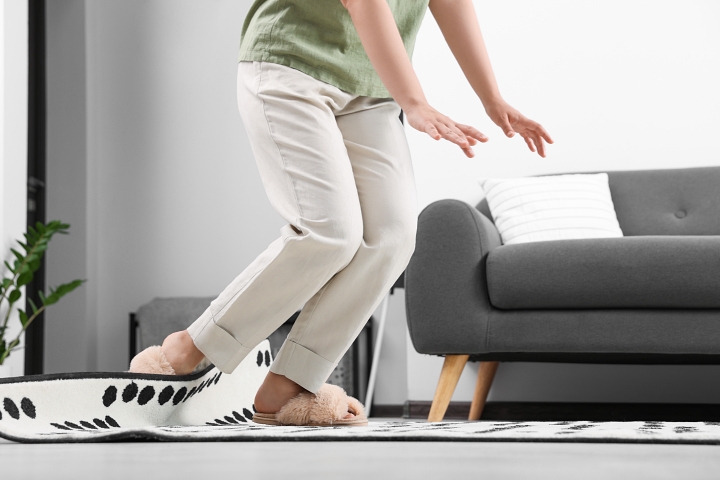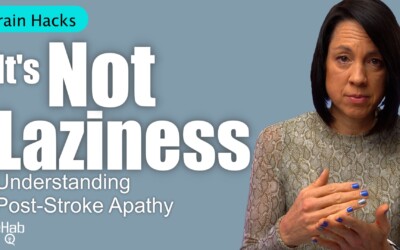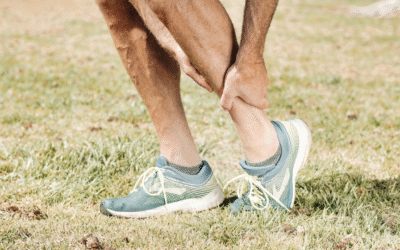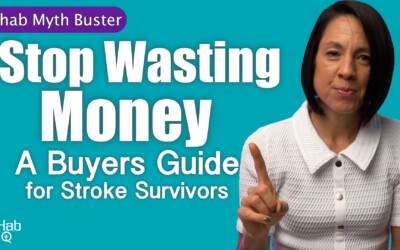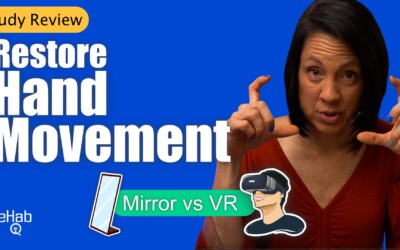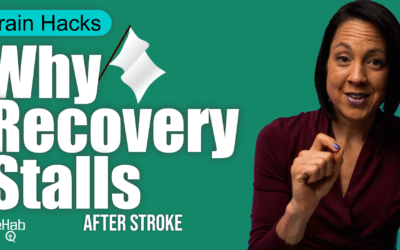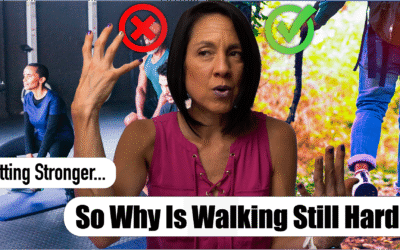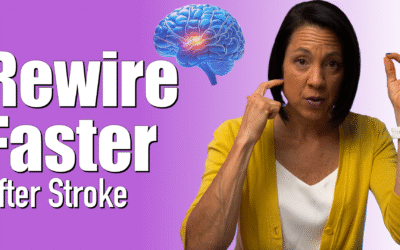Recovering from Stroke? Don’t Let These 7 Walking Mistakes Set You Back
Better Walking Starts by Avoiding These Mistakes
Recovering your walking ability after a stroke is an incredible accomplishment. You’ve put in the work. Strengthening exercises, therapy sessions, and daily practice. But what if your progress feels slower than expected? Or certain strategies just don’t feel quite right?
The truth is, some of the most common walking tips used in stroke rehab can unintentionally make things harder in the long run. Based on my professional experience working with stroke survivors, here are 7 mistakes that could be holding you back.
Mistake #1: Using a One-Handed Device on Your Strong Side
Example: A hemi-walker placed on your stronger arm right after a stroke.
It may seem logical to add stability to your strong side, but this often backfires, especially early in rehab. Devices like hemi-walkers have wide bases and offer so much support that they reinforce leaning and over-reliance on your strong side. This makes it harder to relearn balanced walking, and the habit is tough to unlearn.
What to try instead:
- Two caregivers for hand-held assistance, this encourages symmetry.
- A two-handed walker, possibly with your unaffected hand gently strapped to guide use of both sides.
- If compensations are already present, try placing the device in front of you and avoid keeping it off to the side.
- In the later stages of recovery, consider switching to a walking stick or trekking pole. These give support without encouraging one-sided leaning.
Mistake #2: Assuming Any AFO (Ankle-Foot Orthosis) Will Work
AFOs are often issued early in rehab, but not all are created equal. If your walking form or speed is off, the wrong AFO can make things worse, like stiffening your leg or limiting natural movement.
Real example: One client’s speed training hit a wall because her non-articulated AFO didn’t allow enough ankle flexibility. Once adjusted, her walking improved significantly.
What to try instead:
- Work closely with a physical therapist and orthotist to find an AFO tailored to your goals.
- If it’s not working, let them know. The best providers will try other solutions.
Mistake #3: Throwing Away Your AFO (Ankle Foot Orthosis) Too Soon
Sometimes a therapist says you “don’t need your AFO anymore.” While that may feel like progress, ditching it completely can lead to setbacks.
Here’s why: Spasticity never disappears fully. It’s always there in the background, and when compensations sneak back in, stiffness often follows.
What to try instead:
- Wean off your AFO gradually.
- Use it when walking in public or on long outings, but practice walking without it safely at home.
- Keep the AFO on hand. If spasticity returns, wear it for a week or two to reset.
Mistake #4: Focusing Too Much on Walking Quality Instead of Speed
This might sound counterintuitive, but speed and distance often matter more than form.
What to try instead:
- Prioritize speed and distance if you spend a lot of time in a wheelchair
- Work on a “normalized” walking form only if you’ve had no recent falls, and especially if it’s been years since your stroke.
Mistake #5: Focusing on “Heel-Toe” Cues
“Walk heel-toe” is common advice, but it might not be helping you.
Here’s the issue: Telling someone with spasticity to push off with their toe can actually increase toe pointing, delay foot clearance, and make foot drop worse.
What to try instead:
- Use the cue: “Heel, heel.” Eliminate “toe” from your vocabulary altogether.
- This gives your foot more time to clear the ground and helps prevent tripping.
Mistake #6: Only Strengthening Glutes
Many stroke survivors are told to “strengthen your glutes,” but stroke recovery is about retraining movement patterns, not just building muscle.
Why that matters: A stroke affects the brain’s ability to control movement, not the muscle’s ability to activate. For example, you might be able to squeeze your glute, but still struggle to stand on that leg without your hip dropping.
What to try instead:
- Focus on functional exercises like single-leg standing. Aim to hold your hip steady without dropping.
- Think movement, not just strength.
Mistake #7: “Don’t Look Down”
You’ve probably heard this one before, but it’s misleading. Looking down is normal and necessary for safe walking.
What’s actually dangerous is bending your head and shoulders forward to look at your feet.
What to try instead:
- Glance down with your eyes, not your head.
- Keep your neck upright and shoulders back.
- Look 6–10 feet ahead, but check the ground as needed, especially if you can’t fully feel your feet.
Final Thoughts
Stroke rehab is challenging, and there’s no one-size-fits-all solution. The key is understanding why something is being recommended, and making sure it truly supports your long-term goals.
If any of these tips resonated with you, try out the alternatives and see how they feel. Improving your walking isn’t just about strength or form. It’s about confidence, safety, and freedom.
The 2 Key Nutrients for Brain Recovery After Stroke
Are You Missing the Nutrients That Help the Brain Heal Faster? https://youtu.be/8M50j4Tmncw If you’re recovering from a stroke, you already know the process can feel slow, tiring, and confusing. You work hard on your exercises… but sometimes it still feels like your...
Stroke Recovery and Apathy: What It Is and How to Overcome It
What’s Really Going On When Motivation Disappears After Stroke Recovering from a stroke is a journey that requires strength, patience, and persistence. But for many stroke survivors, the hardest part isn’t weakness, fatigue, or memory loss. It’s something less visible...
Spasticity or Weakness? Understanding Your Stroke Symptoms
How Can You Tell If It’s Spasticity or Weakness After Stroke? https://youtu.be/3QR9D4rBNhc If you’ve had a stroke, you’ve probably heard a few of these words tossed around: spasticity, weakness, stiffness, foot drop. They might all sound similar, but they each tell a...
Master Ankle Mobility: Exercises for Better Walking
Ankle Mobility Exercises to Boost Balance and Walking Ankle stiffness is one of the most common issues people face after a stroke or any neurologic injury. It can make walking harder, cause your toes to catch, or even affect your balance. But here’s the thing,...
Improve Focus and Attention After Stroke
Stroke Recovery: How to Regain Focus and Attention Faster https://youtu.be/ul0wUgXravo When most people think about recovery after a neurologic injury like a stroke, brain injury, or MS, they often focus on the physical side. Strength. Repetitions. Muscle activation....
Should You Spend Money on Stroke Rehab Devices?
Are Trendy Rehab Treatments and Devices Worth It? Here's My Honest Take https://youtu.be/T69LavHLdIQ Should you be spending your hard-earned money on all those rehab devices popping up in your social media feed? And if so, which one is actually worth it? The truth?...
Restore Hand Movement After Stroke with Mirror Therapy
Mirror Therapy & VR: Stroke Recovery for the Hand https://youtu.be/OeThZMwJt40 If you’ve lost movement in your arm after a stroke, you’ve probably wondered: “Is my arm just weak, or is something deeper going on in my brain?” That’s not because your muscles forgot...
Stroke Recovery Plateau: What to Do
Why Stroke Recovery Stalls and How to Push Through Recovery may feel stuck, but progress is still possible. Here’s how to keep improving after a plateau. https://youtu.be/w6xZZpx7tDY Recovering from a stroke or neurologic injury can feel overwhelming. Walking,...
Why Your Stroke Exercises Aren’t Helping and How to Fix It
Stroke Recovery Tips: When Exercises Don’t Seem to Work https://youtu.be/9r06T9gtsYc Is it possible to be making progress after a stroke or neurologic injury and still feel like your movement is getting stiffer, heavier or just plain harder?Absolutely. And let me tell...
Boost Stroke Recovery: 3 Brain Habits That Actually Work
Want to Rewire Your Brain Faster After Stroke? Try These 3 Habits https://youtu.be/iFcjDtHrrwM If you’ve been on this neuro-recovery journey, you know it can feel like progress is slow. You do your exercises, you follow instructions, but sometimes your brain seems…...

